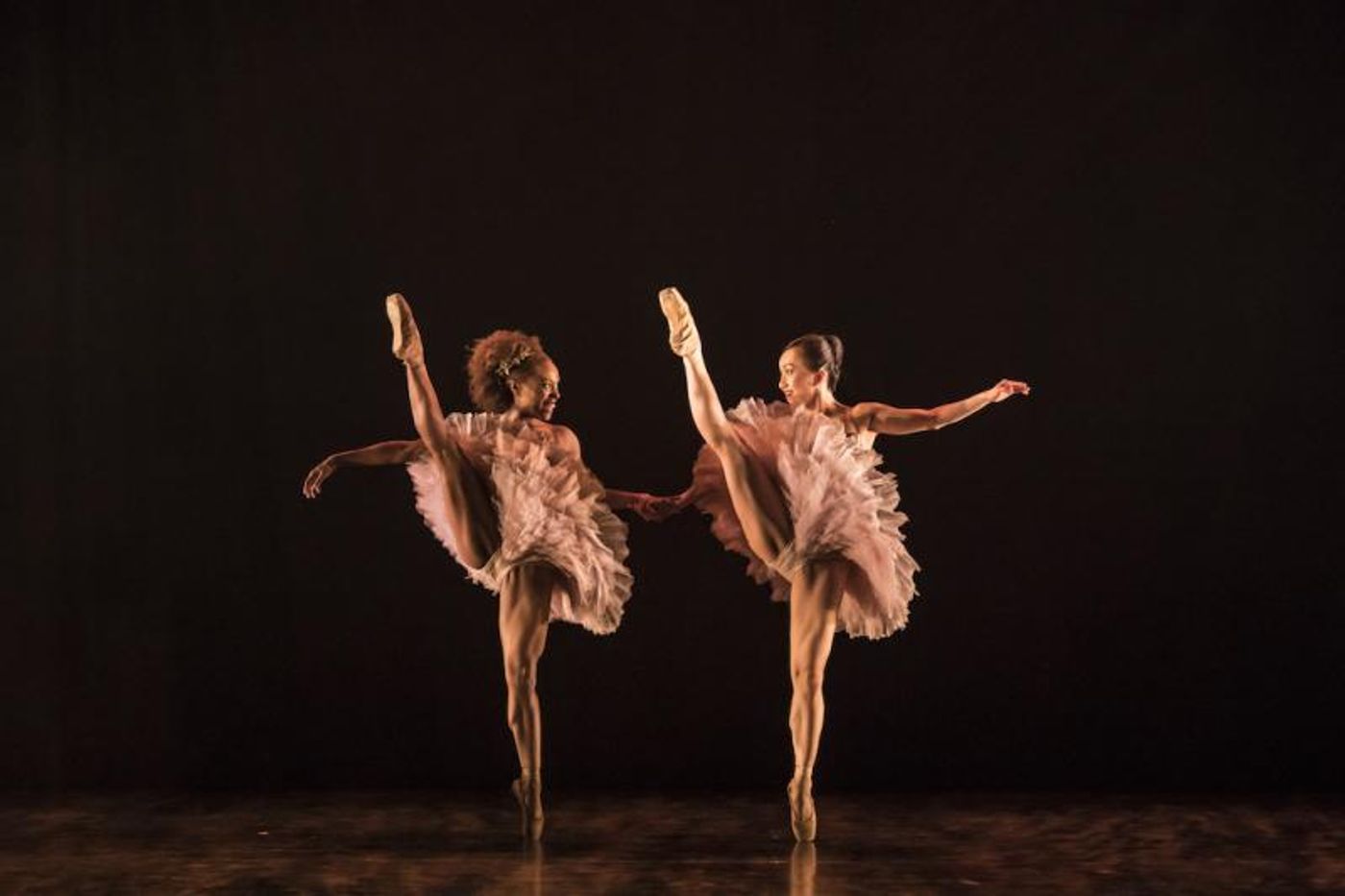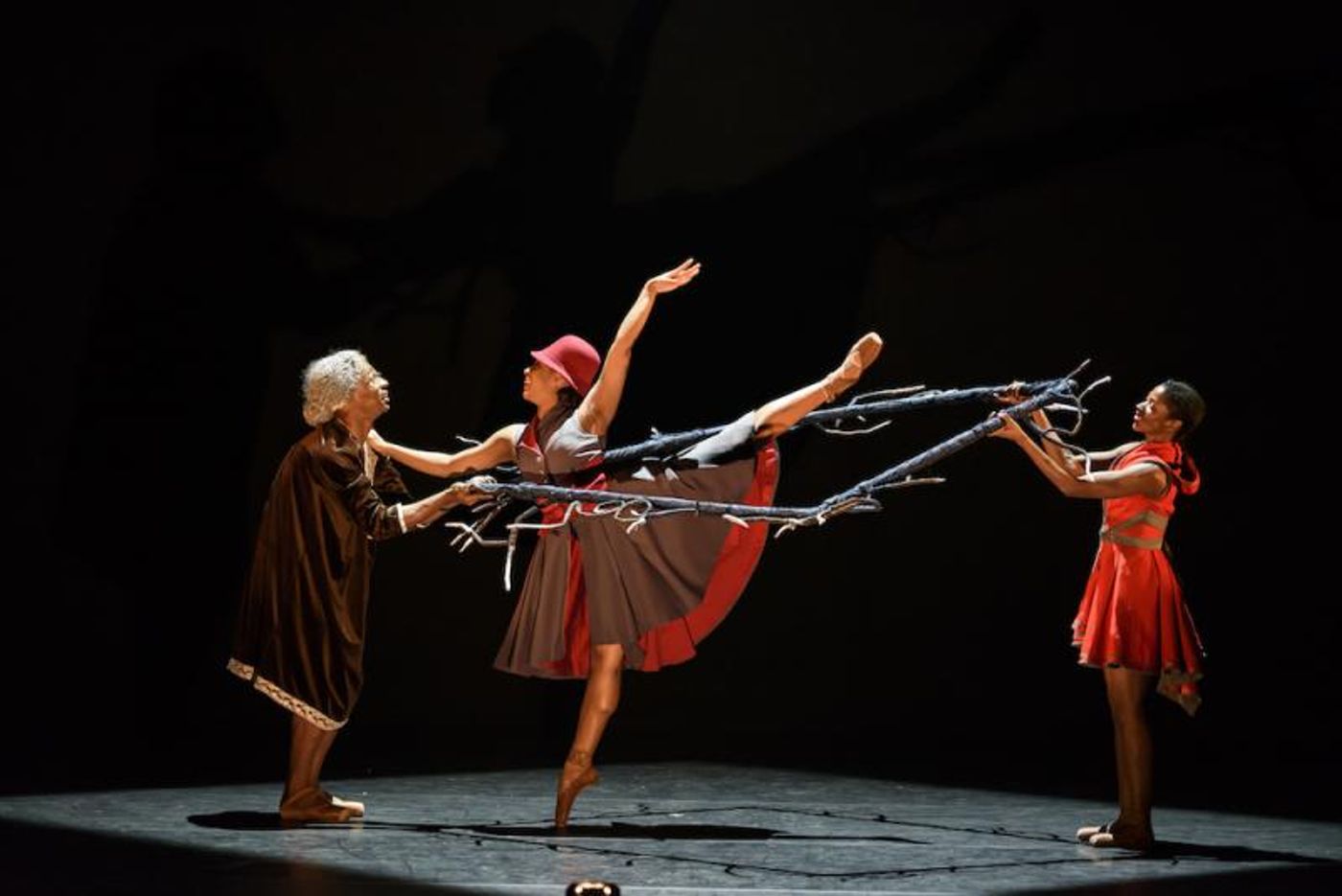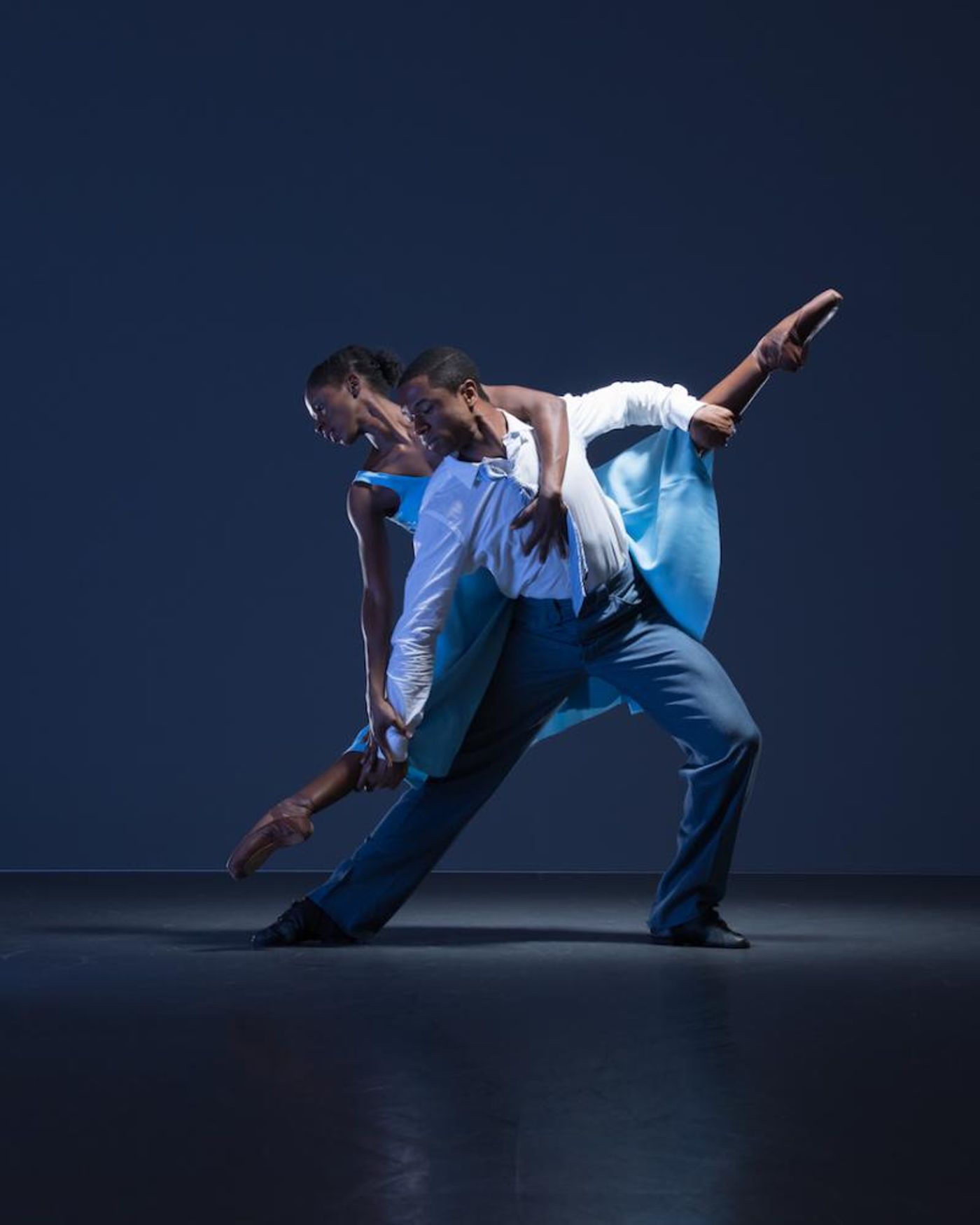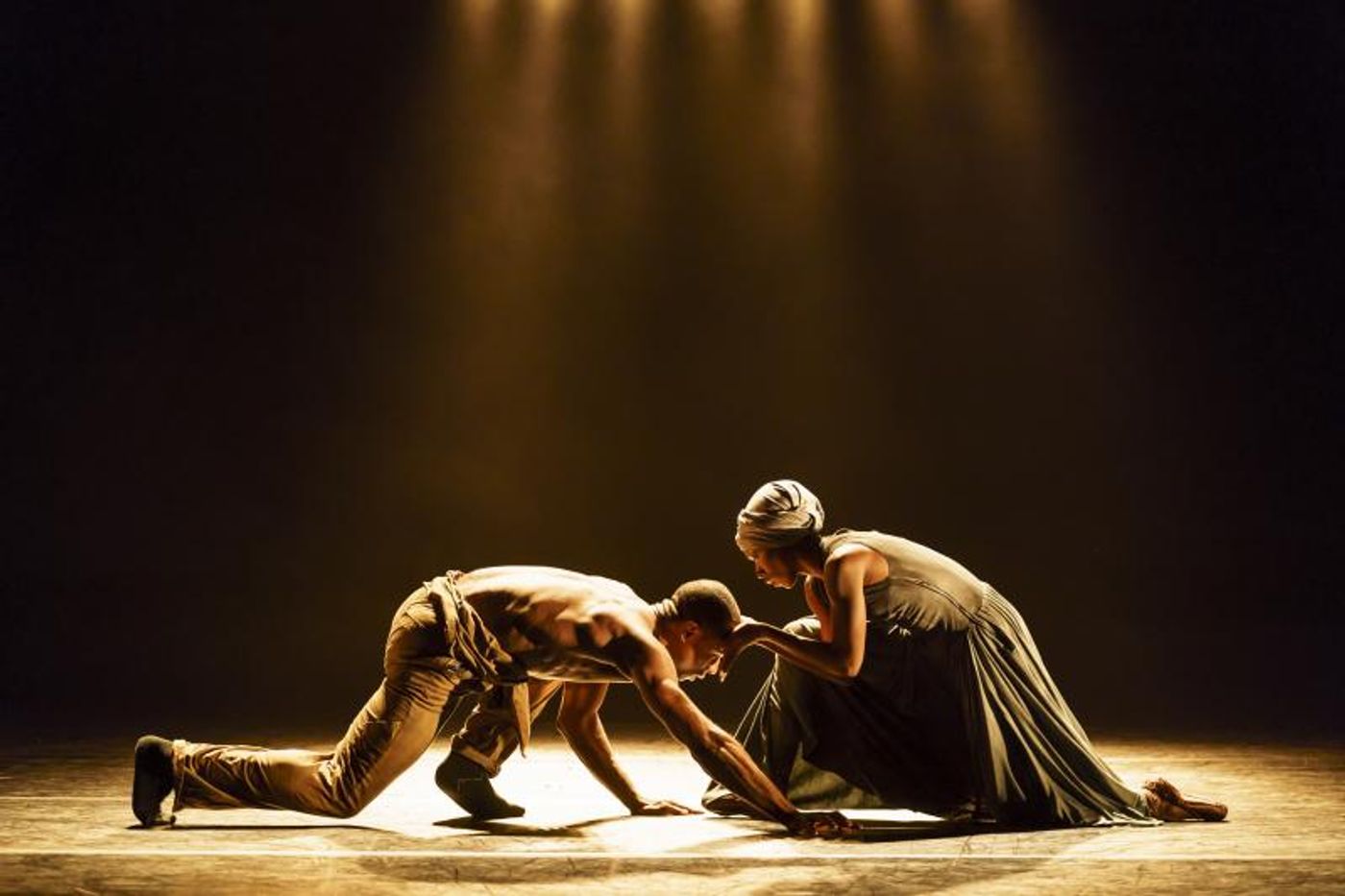Interview: Cassa Pancho Diversifying Dance and Eliminating Stereotypes Through Ballet Black

ASH; photographer
It all started with an article in The Guardian pondering whether the pervasive use of blackface and Fu Manchu mustaches meant ballet had a race problem. It was akin to asking whether Nazis were bad in that the obvious answer was yes, though the measured approach that Lyndsey Winship took in her summation left a sour taste in my mouth, especially after reader Jean-Christophe Maillot's ridiculous response.
"If you ask me if a traditional Swan Lake at the Mariinsky can have a black girl in the corps de ballet, I can tell you honestly that I don't have the answer. But I feel like telling you no."
Initially, I held my tongue because I felt sure that someone in the British press would respond with common sense. That did not happen, so I reached out to Cassa Pancho, MBE--the innovative founder and artistic director of Ballet Black--a company that she founded in 2001 after discovering that there were no professional Black ballerinas in The UK. Though I am Black, I felt it was important to speak with someone who actually lived in England. Pancho was the perfect choice. In addition to her work diversifying the ranks of ballet from the ground up and helping to abolish yellow face, she was also a driving force behind designing and creating Freed of London's multi-hued pointe shoes for Black, Brown, and Asian ballerinas.
---
---
What follows is our--condensed and edited--conversation about the brilliant work she is doing to change the face of British ballet and the shock we both felt about blackface still being a thing. NOTE: Pacho's comments are in bold; mine are italicized.

Ballet Black Founder and Artistic Director.
Holly McGlynn; photographer
I feel that at the moment it's being presented as a question. "Is blackface wrong? And what happens to our precious repertoire without it?" For me, it's not a question. Blackface is wrong. Once you know it's wrong, then you can make a decision about repertoire.
I keep thinking that the horror of the article was clear and obvious. But maybe it's only clear to me because I'm Black and it involves something that purports to represent me.
It was obvious and it was the absolute definition of viewing something through a White privileged lens.
Why weren't you consulted for Lynne Winship's article?
Ballet Black doesn't program 19th century work so it's not even a practical consideration for us. What disappointed me was that she didn't speak to anyone Black, Brown, or Asian. We have several dancers in each major company over here in the UK who could speak with authority and experience in having danced these roles.
What frustrated me was Jean-Christophe Maillot's game of "not being sure" when it was actually a declaration.
I think the problem is that some people truly think that he's not sure. They don't realize what the underlying issue really is. It's not because the dancer isn't very good or lacks the right quality or even the right height; it's because it would look wrong to him. That to me is just so deeply offensive.

by Arthur Pita. Bill Cooper; photographer
What went through your mind when you read the bad-faith rationalizations about 'purity'?
I felt disappointed. I thought that we had got to a place in the classical ballet world where people knew to keep thoughts like that to themselves. So even if they're just paying lip service, they're still not putting it out there. It's worrying because this is the kind of stuff I was reading twenty years ago when I was setting up Ballet Black.
Your game plan with Ballet Black feels like a continuation of Arthur Mitchell's mission of providing the opportunity to study ballet to girls and boys of all backgrounds, particularly those who are Black and Brown. What are some of your school's successes?
For me, every student that enrolls is a success because you don't just get the kid; you get the family. And that is where you change the perception of ballet in the Black community that it's not open to them; that they wouldn't be welcome; that their child might be the only Black face in the room. These are all reasons why I started Ballet Black. I did my research and this was the message I was getting from Black parents. And I knew immediately that if we had a school with diverse teachers, much like the DTH school, it would change the power in the room. Because for the student, the teacher would look like them.

Bill Cooper; photographer
I've heard that Ballet Black's student body is 70% Black and Asian and that their families have created a powerful network of support for each around everything from access to brown tights and shoes to how to properly style their braids.
That's a bit of an issue over here, with a few girls being told they can't come into ballet with the hair braids, which of course is just nonsense.
Do you have to tell parents you're not trying to turn their kids into professionals because they are worried about career prospects?
We actually have the opposite where everybody thinks they're going to join Ballet Black. I'm probably going to have an issue on my hands when these girls and boys turn to professional age. We're only an eight member company so there's only so much we can do in terms of taking dancers on. But it's good. I wanted to kick down the idea in this country about whether people can do ballet or not.

The Suit by Cathy Marston
ASH; photographer
The message has always been, "It's not for you to come out and audition for Ballet Black; it's for you to audition wherever you want." Where do you want to go? What company do you want to be in? What repertoire do you want to dance? What as an artist do you want to do? That's what I'm interested in.
Talk to me about Ballet Black's pioneering American dancers. I know that you all don't have same history of Black dancers that New York does with Dance Theatre of Harlem and Alvin Ailey American Dance Theater.
A decade or so ago, we didn't have enough dancers of the right quality here in the UK. I got a lot of hassle for going to America and auditioning but I always knew that we had to put the very best dancers that we could get onstage. Otherwise, what were we doing this for? If we put people out there who weren't ready we would perpetuate the idea that Black people could not do ballet.
Can I ask you about your comment on Twitter? I mean, I know that whenever Misty Copeland says anything the British press runs to you because they don't have access to her and you're "the next best thing".
---
---
Misty said what she said about the Bolshoi, which I agree with, and then we got inundated with requests to debate blackface. My whole day was spent shutting people down until I thought, "Let me do a tweet, just to cover all of my bases", because how can this be the discussion?
Let's talk about what to do with the repertoire if you want; whether you get rid of it or whether you could rework it. Let's talk about that. But no, we still have to say "Is it good or is it bad?" Yes, of course it's bad. When I explained that to a couple of journalists, they said, "We don't need 'Is it right?' But can we talk to your dancers about all the hardships they face as Black dancers?" I said, "No. You can interview them as ballet dancers who are amazing."

in Click! by Sophie Laplane.
Bill Cooper; photographer
Ballet Black is acclaimed for it's vast repertoire, with works from Arthur Pita, Cathy Marston, Annabelle Lopez Ochoa, Jonathan Watkins, Robert Binet, Javier De Frutos, Will Tuckett, Liam Scarlett, and Richard Alston. How did that happen?
It started as a necessity. With only eight dancers you can't really do a lot of the repertoire that exists here in the UK because they require 30 people. Back in 2001/2002 nobody was making new ballets so it became a reason to come to the show if you didn't buy into this whole Black dancers getting a platform thing--which a lot of people didn't back then--or you weren't sure about us as a startup company.
Readers should know that there are no pick-up or project-based ballet companies in The UK. There are only the five big companies and Ballet Black.

Washa: The Burn From The Inside
by Mthuthuzeli November.
Bill Cooper; photographer
As we've gone along, I've fought really hard to make sure that even though we present a lot of contemporary work, that we base it in classical ballet because until very recently, we were still fighting the idea that Black people couldn't do, "real ballet". And then I realized I don't need to keep fighting this fight. Arthur Mitchell has proven this many years ago. All the Black dancers that exist across the world are proving it, so I don't have to limit what Ballet Black does. Last year, we created a ballet by one of our own dancers who's South African, and included elements of African movement and song in it. It was just an incredible success. And it really spoke to our modern new audience on a totally different level.
What are your wishes for the next decade?
I want brown pointe shoes tights and ballet shoes to be normal. I don't want it to be, "Oh my goodness. That's amazing." I want it to be, you go into the store and you choose. You want to wear pink, you wear pink. But if you want brown, it's there.

in Ingoma by Mthuthuzeli November.
Bill Cooper; photographer
I want my dancers to be interviewed, because they're amazing dancers and (not just because they're Black). At the same time, I want to keep telling stories from Black choreographers and Black artists, because I think the ballet repertoire needs more than the ten ballets that the world keeps going back to. We need more stories than this and if we open up who tells the stories, then we're going to get something exciting and new and different and that will build the audience of tomorrow. The ballet audience over here is older--not the Ballet Black audience, but the classical ballet audience--and at some point we have to consider who the next audience is going to be. I think if you have an audience full of Black, Brown, Asian, and whatever color people, you as a director will think twice about programming La Bayadere or Petrushka. I really believe that.
Cassa Pancho for President? I'm a believer. Let's hope we see her and Ballet Black over on this side of the pond sometime in the near future. Maybe at City Center's Fall for Dance Festival? L'Shana Haba'ah B'Yerushalayim.
Cover photo features Cira Robinson and Mthuthuzeli November in Arthur Pita's Crista. Photograph by Bill Cooper.
Videos

